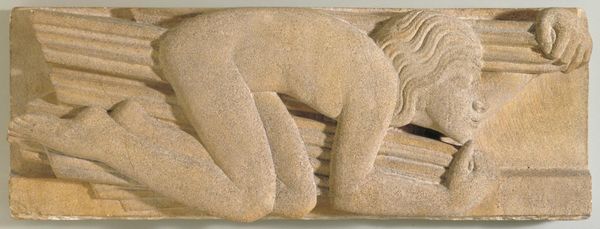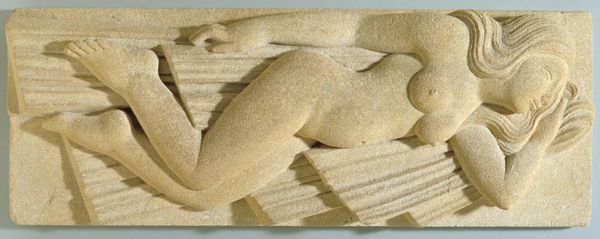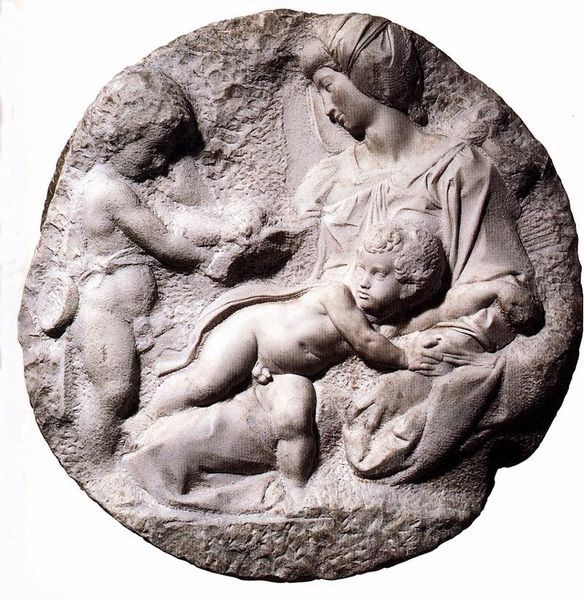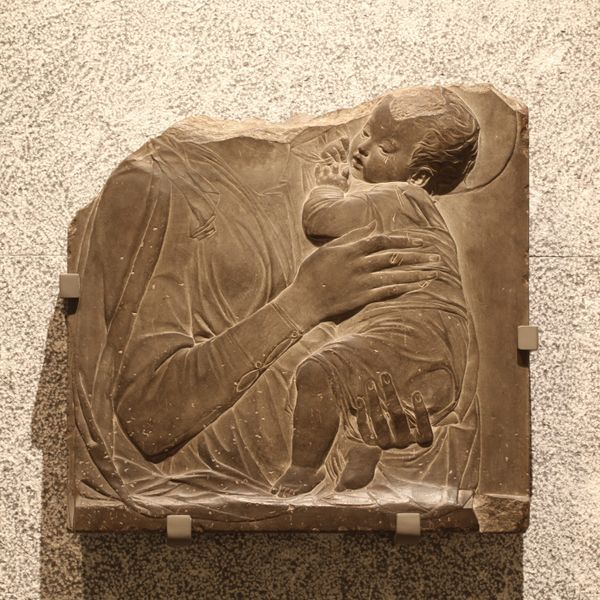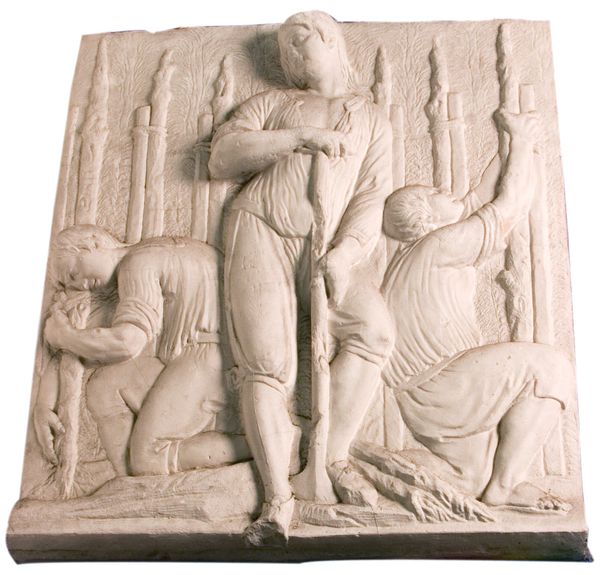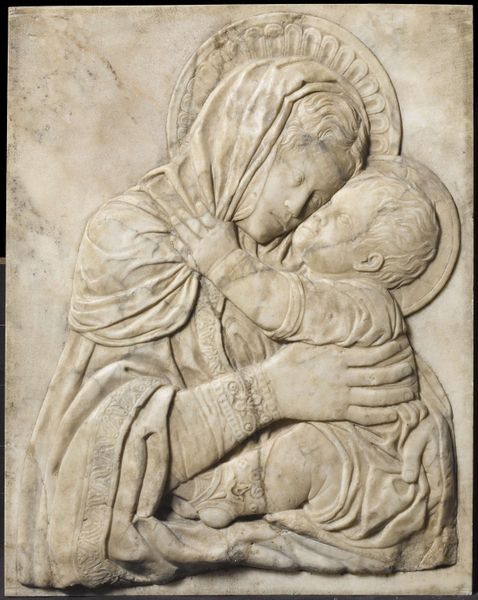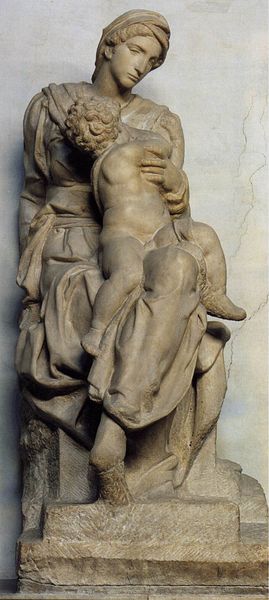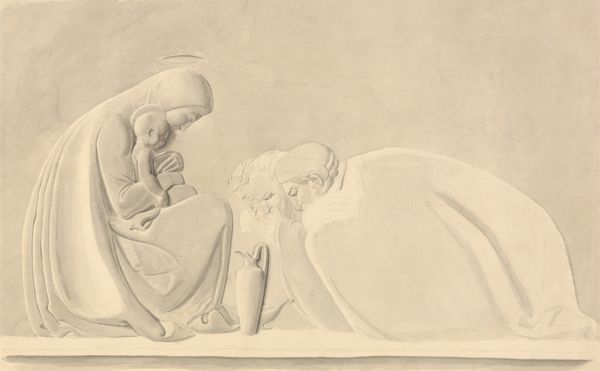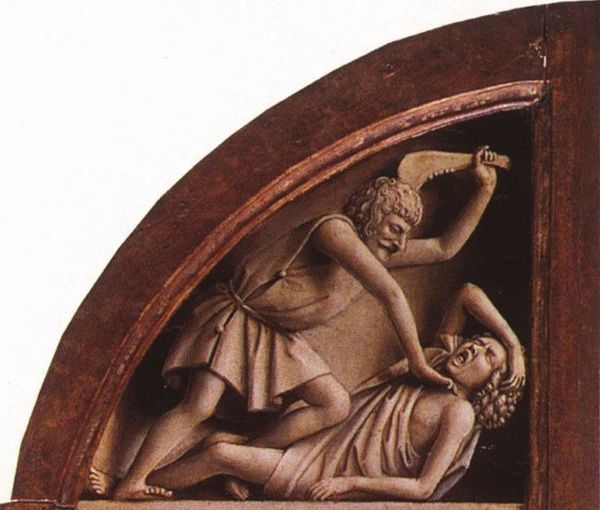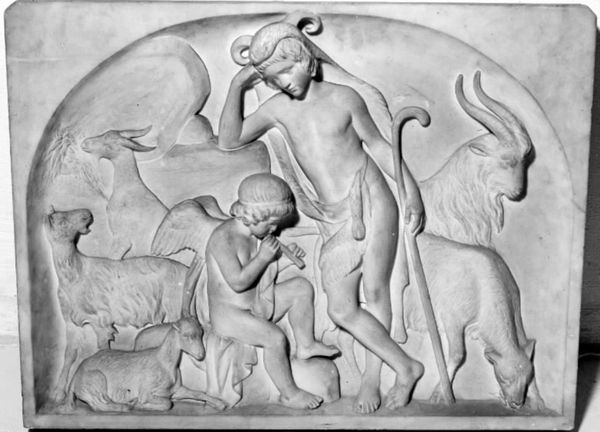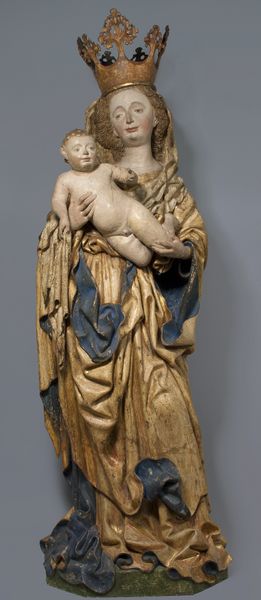
Dimensions: object: 254 x 705 x 102 mm
Copyright: CC-BY-NC-ND 4.0 DEED, Photo: Tate
Curator: Eric Gill's sandstone relief, "The East Wind," presents us with a reclining nude figure amidst radiating lines. It is currently part of the Tate Collection. Editor: The overall effect is one of languid stillness, yet the radiating lines create an interesting tension, almost as if the figure is resisting a force. Curator: Gill's work often explored the tension between the sacred and the profane, and his personal life was certainly complex. Considering that tension, this work can be seen as an exploration of power and vulnerability. Editor: The wind itself is an ancient symbol, linked with breath, spirit, and change. Here, the figure seems both subject to it and almost generating it. Curator: Exactly. The figure's pose—caught between surrender and resistance—reflects a struggle for autonomy within societal constraints, a theme often present in his work. Editor: I appreciate how Gill uses the stark simplicity of the medium to express such a multifaceted idea. Curator: Indeed, it prompts us to reflect on our own relationship to forces beyond our control.
Comments
Join the conversation
Join millions of artists and users on Artera today and experience the ultimate creative platform.
tate 7 months ago
⋮
Gill pioneered a return to traditional craft skills, in particular stone carving. In 1928 he led a team of sculptors commissioned to carve reliefs symbolising the four winds for the exterior of the new London Underground headquarters at St James’s Park station. These are copies he made later. The style of the reliefs demonstrates Gill’s admiration for English and French medieval sculpture. Gallery label, September 2016
